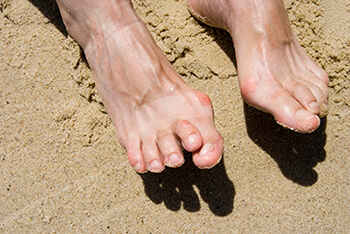
Hammertoes are a common foot deformity in which the toes bend downward at the middle joint. This gives the toes a claw or hammer-like appearance. Beyond aesthetic concerns about the appearance of the toes, this condition can also be painful. The toes may become stiff or immobile at the joints, cause pain during movement, become swollen, red, or inflamed, and make wearing shoes uncomfortable as the tops of the toes rub against the shoes, leading to corns and calluses.
Hammertoes are thought to be caused by a muscle imbalance in the toes, which puts increased pressure on the toe’s tendons and joints. This muscle imbalance may be caused by genetic differences in the structure of your foot, wearing shoes that are too tight, small, or narrow, have no arch support, or have excessively high heels, neuromuscular diseases, and injury to the toes.
Without treatment, hammertoes become progressively worse over time. Treatment for flexible hammertoes, which retain mobility at the joint, is usually conservative and may include making footwear modifications, wearing orthotics, taking medications to reduce pain and inflammation, and padding corns and calluses that have developed on the toes. Rigid hammertoes, which have caused the toes to become completely stiff and immobile at the joint, may require surgery to straighten them.
If you have hammertoes, please seek the care of a podiatrist.




